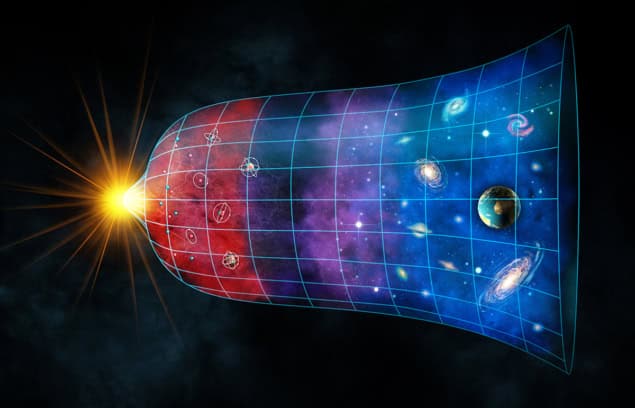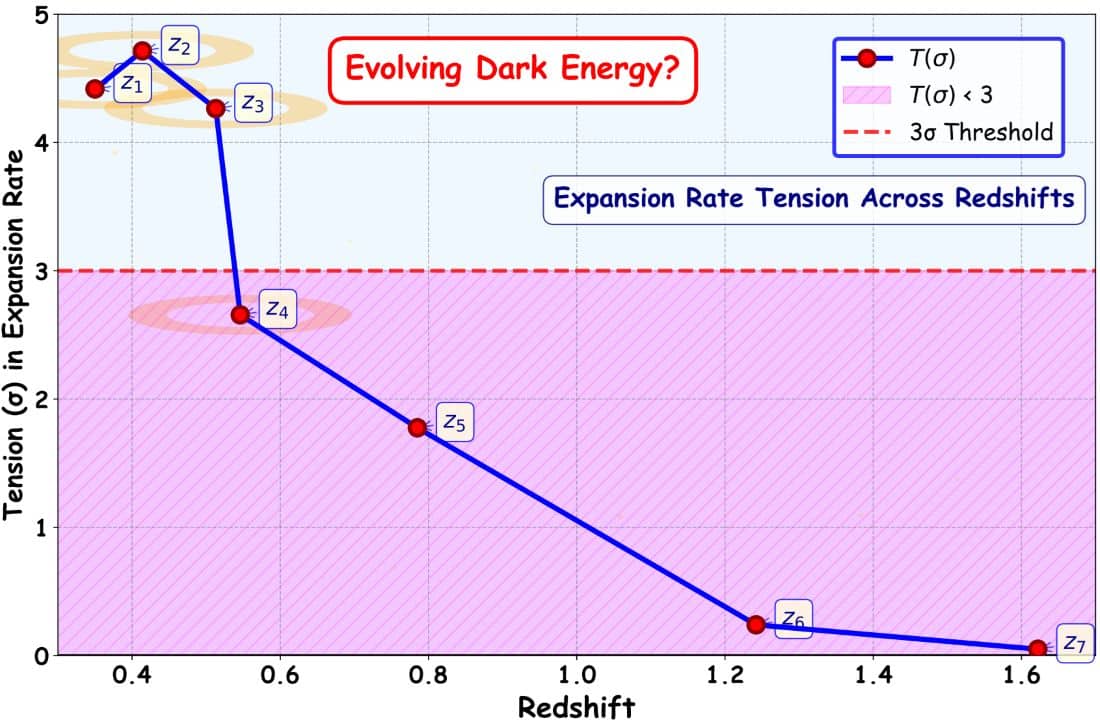Researchers from the Centre for Theoretical Physics, Jamia Millia Islamia, in India have combined data from baryon acoustic oscillations and supernovae to question our understanding of the nature of dark energy

The term dark energy, first used in 1998, is a proposed form of energy that affects the universe on the largest scales. Its primary effect is to drive the accelerating expansion of the universe – an observation that was awarded the 2011 Nobel Prize in Physics.
Dark energy is now a well established concept and forms a key part of the standard model of Big Bang cosmology, the Lambda-CDM model.
The trouble is, we’ve never really been able to explain exactly what dark energy is, or why it has the value that it does.
Even worse, new data acquired by cutting-edge telescopes have suggested that dark energy might not even exist as we had imagined it.
This is where the new work by Mukherjee and Sen comes in. They combined two of these datasets, while making as few assumptions as possible, to understand what’s going on.
The first of these datasets came from baryon acoustic oscillations. These are patterns in the distribution of matter in the universe, created by sound waves in the early universe.
The second dataset is based on a survey of supernovae data from the last 5 years. Both sets of data can be used to track the expansion history of the universe by measuring distances at different snapshots in time.
The team’s results are in tension with the Lambda-CDM model at low redshifts. Put simply, the results disagree with the current model at recent times. This provides further evidence for the idea that dark energy, previously considered to have a constant value, is evolving over time.

The is far from the end of the story with dark energy. New observational data, and new analyses such as this one are urgently required to provide a clearer picture.
However, where there’s uncertainty, there’s opportunity. Understanding dark energy could hold the key to understanding quantum gravity, the Big Bang and the ultimate fate of the universe.
Read the full article
Mukherjee and Sen, 2025 Rep. Prog. Phys. 88 098401
